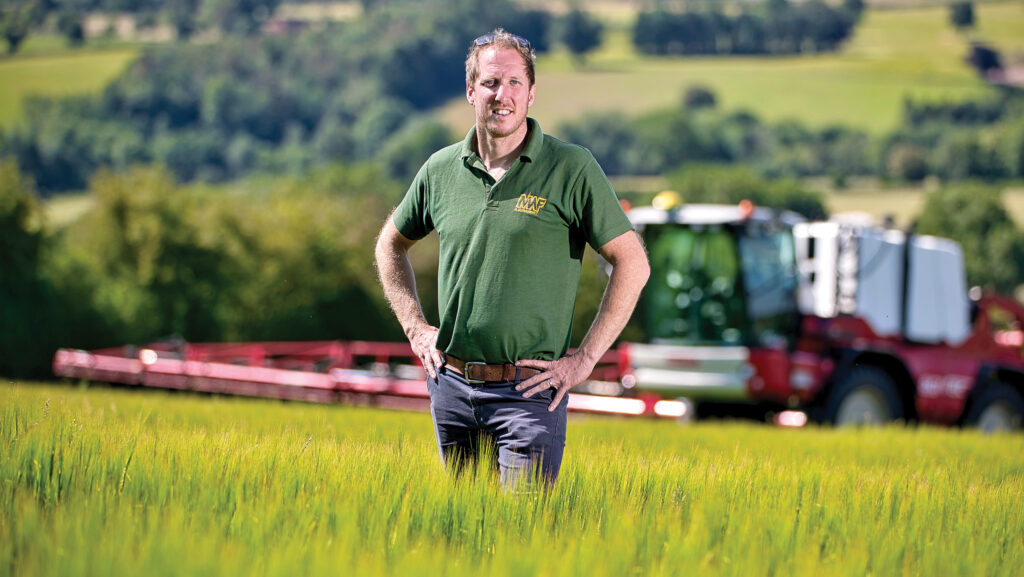Transition Farmer: Milling wheat contract secured
 Matthew Williams © Richard Stanton
Matthew Williams © Richard Stanton Farmers Weekly Transition Farmer, Matthew Williams is aiming to improve profitability on his farm in Shropshire.
The farm is shifting from feed wheats to milling varieties to try to achieve this goal. We find out how he is progressing.
See also: All updates from Matthew Williams
Matthew Williams
Farm facts
Criddon Hall Farm, Shropshire
- Farm size: 1,100ha
- Crops: Wheat, spring oats, spring barley, winter beans, OSR, triticale
All 567ha of wheat Matthew Williams is establishing this autumn are sown with milling varieties – a big shift in direction for a business that usually grows feed wheat.
It comes on the back of two difficult years for profitability and after securing an ADM contract to supply milling wheat.
Improving profitability is a Transition goal, which Matthew is addressing in part by maximising margins through targeting milling specification.
Cultivation
Reducing cultivation is another objective.
“The first leg of sustainability is profitability. You can’t farm at a loss – put simply, say that you have burnt 15 litres/ha less diesel by direct drilling, but have no crops to combine, that just doesn’t work.”
Advice received when Matthew first introduced changes to his farming system was to avoid that “cold turkey” approach and trial reduced cultivation in small areas first.
“You quickly realise that if your sheds aren’t full, your margins would have to be phenomenal to make up for that gap in yield,” he says.
“To tell a landowner that we will break even, but that it’s OK because we have direct drilled everything, doesn’t wash for me – you need to make a profit.
“We are still trying to do as much as we can environmentally, but are taking more of a view that we will run a leg through any land that is compacted.”
Where Matthew has direct drilled, soil improvement is noticeable within 12 months. “We get very little movement in our light land, and that was a big lightbulb moment.”
Matthew has bought a 6m Claydon drill and is practising what he describes as a “halfway house” cultivating some land, but not all.
Early establishment
Good conditions in September saw early establishment.
“Regen-wise, you might say it has been so dry we could wait until October, but I don’t have the nerves to sit on my hands. For me, a crop well-sown is half-grown,” he says.
Most of the land Matthew farms is contract farmed, therefore investing in a small block to establish a grain store is a big milestone, “to own a bit of England and to have control”.
With planning permission secured for a 6,500t facility with a 40t/hour continuous flow dryer and a pre-cleaner, work will start soon to get it completed before the 2026 harvest.
Transition goals
- Improve profitability and margins
- Control and optimise input use
